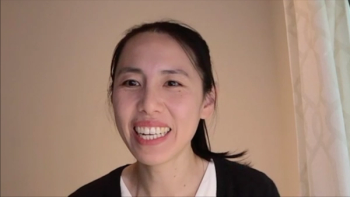
The American Journal of Managed Care
- February 2025
- Volume 31
- Issue 2
- Pages: e56-e61
Veterans Health Administration Benefit Value Has Little Effect on Reliance
Key Takeaways
Relying on veteran survey responses and novel actuarial data, the authors examine the relationship between benefit value and reliance on the Veterans Health Administration.
ABSTRACT
Objectives: US military veterans have multiple options for health insurance coverage, including the Veterans Health Administration (VHA) and Medicare programs, which can lead to strategic selection of coverage and potentially inefficient budgetary allocations. Because coverage choices are likely to be a function of coverage availability and benefit value, understanding the relationship between benefit value and reliance on coverage is critical.
Study Design: Analysis of cross-sectional, nationally representative survey data.
Methods: This analysis relied on a novel measure of benefit value for the VHA and Medicare Advantage (MA) programs and nationally representative survey data of veterans and their health care use for 2016 through 2019. Linear regressions controlling for beneficiary and market characteristics with state and year fixed effects were used to first estimate the effect of VHA benefit value relative to MA benefit value on MA enrollment, and then on veteran reliance on VHA-paid care conditional on MA enrollment.
Results: We found that a $1 increase in relative VHA benefit value leads to at most a 0.2% (SE = 0.04) reduction in the probability of MA enrollment and a 0.3–percentage point (SE = 0.1) increase in reliance on VHA-paid care. Results were consistent across subgroups of enrollees, with slightly larger effects for enrollees with less generous benefits.
Conclusions: For most veterans, benefit value has a small, often nonsignificant, effect on reliance. These results imply that changes in VHA benefit value are unlikely to have major effects on veteran reliance on the VHA.
Am J Manag Care. 2025;31(2):e56-e61.
Takeaway Points
Veterans often have multiple sources of health insurance coverage. Changes in the benefit value of coverage offerings can affect veterans’ enrollment and where they seek care. Using a nationally representative survey and novel data on the benefit value for veterans in Medicare, we investigated how responsive veteran enrollment and utilization are to changes in benefit value.
- We found a small relationship between benefit value and veteran enrollment and utilization choices.
- This may be because the Veterans Health Administration benefit is already generous.
- This suggests that potential changes to benefit offerings under the Veterans Health Administration are unlikely to drastically affect where veterans receive care.
The US government funds health insurance coverage for veterans through various programs, including Medicaid, Medicare, TRICARE, and the Veterans Health Administration (VHA). These programs cover more than 100 million individuals, some of whom have primary coverage through multiple programs.1 For example, approximately 80% of veterans enrolled in VHA coverage have alternative coverage.2 As policy makers consider changes to benefits and coverage standards, these coverage regimes can lead to complicated interactions, which affect the budget for each of these programs. This can lead to double billing,3 strategic selection of coverage by beneficiaries, and inefficient budgetary allocations, leading to the use of higher-cost care when lower-cost options are available. Whether these interactions exist is an empirical question.
Background: VHA
The VHA, which is part of the US Department of Veterans Affairs (VA), provides health care coverage and services to more than 9 million veteran enrollees across 171 medical centers and 1112 outpatient sites.2 Partly due to the expansion of VHA coverage under the Veterans Access, Choice, and Accountability Act of 2014 (Choice Act) and the VA Maintaining Internal Systems and Strengthening Integrated Outside Networks Act of 2018 (VA MISSION Act), nearly 30% of the VHA’s $87.8 billion for medical care in fiscal year 2022 was spent on the Community Care program, which pays for health care provided to veteran enrollees by private providers.4
Enrollees pay little to no out-of-pocket costs for covered services. Cost sharing is determined by an enrollee’s priority group, which is based on income and service-connected disability (typically an illness or condition that was caused or worsened by active military service).5-7 There are 8 priority groups, with 1 being the highest-need group and 8 being the lowest-need group. Even for enrollees classified as the lowest need, co-payments tend to be lower than in the private sector and Medicare Advantage (MA) sector.2,8 Over time, benefits for VHA coverage have remained relatively constant (eAppendix 1 [
Numerous factors affect veterans’ decisions to enroll in non-VHA health insurance (such as MA) and use non-VHA care. For example, the providers available through alternative options may increase access to care, potentially with less utilization management (in the case of Medicare) than within the VHA. In prior work, researchers found important factors driving veteran use of non-VHA care, including convenience, better access to services, and the ability to seek second opinions.9 Veterans who used VHA care cited the lower cost of the care as a driving factor.10
Recent evidence found that, across various specialties, wait times for appointments were highly predictive of reliance on VHA care.11 Other factors including distance to VA facilities, age, health status, and priority status have also been found to be predictors of differences in VHA reliance.12-14 This suggests that factors related to the quantitative value of the VHA relative to other insurance benefits, as well as less commonly measured factors such as patient preferences, may be predictive of reliance on the VHA.
Background: MA
Under the current MA program, private insurers bid to offer coverage to beneficiaries across the country. MA insurers are paid based on county benchmarks and can receive additional rebates to offer supplemental benefits (eAppendix 2).15 Because of the incentive structure, insurance offerings and plan benefit structures vary substantially both longitudinally and cross-sectionally.16
Benefits vary due to profit-maximizing behavior by insurers. Study findings have shown that insurers optimize the conditions for which they will cover prescription drugs, choosing those that are more profitable.17,18 They set benefit and provider network configurations that limit the use of low-value care by beneficiaries.19 More recently, insurers appear to be targeting plans (and likely benefits) toward specific groups of beneficiaries (eg, affinity plans targeting women and members of Latinx and Asian communities).20 Ultimately, benefits and provider networks are expected to (and do) vary across plans to attract enrollees with specific preferences and characteristics.
Factors affecting Medicare beneficiaries’ MA enrollment decisions include eligibility for the Part D low-income subsidy, race and ethnicity, dual eligibility for Medicare and Medicaid, age, health status, and original reason for Medicare enrollment.21 Plan and market factors that influence MA enrollment include the number of MA plans offered in the region, Part D and Medigap premiums,22 and the value of supplemental benefits and cost-sharing reductions relative to traditional Medicare (TM).23
Given the high prevalence of duplicative coverage, VHA enrollees’ expanded access to private-sector providers raises potential efficiency concerns. Although there may be explicit duplicative services provided (eg, a veteran might receive imaging both within and outside the VHA), other issues also raise budgetary concerns. If veterans have access to a provider both through VA Community Care and through their MA plan, for instance, using one form of coverage vs the other may lead to higher costs.24 Relatedly, if a veteran is enrolled in an MA plan but uses no benefits, the insurance plan would still receive payment from the federal government while paying for no services. Altogether, this suggests that enrollees’ choice of where to receive care may not be aligned with optimizing total federal spending, especially because the VHA is funded through congressional appropriation and has a fixed budget, whereas MA and TM are funded through open-ended mandatory spending.25,26
In this study, we focused on VHA beneficiary enrollment in MA. Among the more than 9 million VHA enrollees, approximately half are enrolled in Medicare, and one-third of Medicare-VHA enrollees receive coverage through MA.2 We investigated the effect of changes in plan benefit value determined by cost-sharing designs on the choice of coverage and the impact of plan benefit value on the share of services paid for by the VHA (relative to all services). Although veterans typically face little to no cost sharing for obtaining care in the VHA (although this varies by priority group), the additional benefit value offered by MA (above what TM offers) may incentivize enrollment in MA plans, particularly given that MA premiums are typically zero. Coverage of supplemental benefits such as dental and vision, as well as potentially easier access to specialists, may then incentivize veterans to rely on MA-paid coverage.
This study has implications for both the MA and VHA managed care systems and their budgets, especially as MA enrollment continues to grow and the VHA budget continues to increase. Identifying how benefit value may affect reliance on the VHA in the context of multi-insurance coverage can help policy makers determine what options may be effective in moderating VHA budget growth. If benefit value tends to affect reliance, then changes in co-pay structure can be effective. If it does not, other approaches (such as changes to community care networks) may be necessary.
This evaluation was conducted as a quality improvement activity for VHA and was deemed by the Research and Development Committee at VA Boston Healthcare System not to be research.
METHODS
Data
We merged several data sources to build a sample of veterans who were 65 years or older and not enrolled in Medicaid between 2016 and 2019. The Survey of Enrollees (SOE), an annual nationally representative random sample of veterans enrolled in VHA coverage, provided information on veteran reliance on the VHA, veteran health care utilization, and veteran demographics.2 Variables included race, age, marital status, and MA enrollment status. Reliance included both services provided under the VHA’s Community Care program as well as those delivered in VHA facilities. We pooled cross-sections of the survey, using survey years 2016 through 2019, generating a veteran-year data set.
The SOE asks enrollees about the total number of outpatient visits in the first 3 months of the fiscal year and how many of these visits were paid for by the VHA. It also asks about the total number of medications used in the past 30 days and how many were obtained from VHA pharmacies.
We developed an overall measure of reliance by first computing the proportion of total outpatient visits paid for by the VHA and the proportion of prescription drugs paid for by the VHA. We then computed a weighted average, with weights based on the distribution of costs between outpatient and pharmaceutical spending for individuals 65 years or older, as reported in the 2018 Medical Expenditure Panel Survey.27
The complete SOE data include 168,540 veteran-year observations and represent 33,025,782 veteran-years with weighting. We made numerous exclusions for missing data and age detailed in eAppendix 3.
Although there was potential for misreporting, the measure of reliance we constructed from the SOE appeared to be consistent with measures of reliance used in VHA budgetary projections. Across the years of SOE that we collected, reliance averaged 42% compared with 38% in budgetary projections.28
Plan benefit values, relative to TM, were obtained from the actuarial firm Milliman’s Medicare Advantage Competitive Value Added Tool. Benefit values include base medical benefits, prescription drug benefits, and supplemental benefits. Benefits are a function of deductibles, co-payment amounts, and coinsurance. They are calculated based on the expected utilization of a standardized population for a given list of services, intended to reflect typical Medicare enrollees. Thus, variation in cost sharing, rather than utilization, drives differences in benefit value. Milliman also used the tool to estimate the value of VHA plan benefits relative to that of TM.
MA benefit value was computed by year, plan type (preferred provider organization vs health maintenance organization), and county. VHA benefits additionally varied by 4 veteran priority groups (priority groups 1, 5, 7, and 8). We examined only these 4 priority groups because data from Milliman were not available for the others (note that the selected priority groups account for more than 70% of VHA enrollment). We aggregated the values to the county–year–priority group level by calculating the enrollment-weighted average of the measures of actuarial value for each year–county–plan type–priority group. MA values were held constant for each priority group within each year–county–plan type. Enrollment snapshots at the county–year–plan type level were available for all MA enrollees as of February of the calendar year and were provided by Milliman. These snapshots were used to generate an enrollment-weighted average of value.
Additional characteristics were obtained from other data sources as control variables. We identified veteran health conditions and risk scores from data compiled by the Health Economics Resource Center. The data specify whether a veteran has certain conditions, such as those identified in the CMS Hierarchical Condition Category (HCC) model, as well as additional conditions (primarily mental health and/or substance use) identified in VHA data. Additionally, these data include HCC risk scores for each veteran and a VHA-specific risk score known as the Nosos risk score for each veteran. These indicators were included in our models. We obtained both prospective risk scores (those that use current-year data to predict next year’s risk) and concurrent risk scores (those that use current-year data to predict the current year’s risk). We lagged data on conditions by 2 years to ensure that simultaneous reliance did not affect identification of conditions.
We used VA Planning Systems Support Group data to identify annual county of residence for veteran enrollees and linked several county-year variables from the Area Health Resources Files that were previously associated with MA market entry, costs, and enrollment.29 These variables include the TM mean HCC risk score, median income, the share of the population 65 years or older, the share of the population that is Black, the share of the population that is Hispanic, and an indicator for whether the county is metropolitan, nonmetropolitan but partially urban, or rural. Veterans without a valid county of residence were excluded.
Lastly, we obtained data on components of MA payment rates in each county from CMS ratebook files. These variables included the county quartile ranking of TM costs, whether the county is eligible for a double bonus under MA payment rates, and whether payment rates are capped by pre–Affordable Care Act payment rates.
Statistical Analysis
We estimated linear regressions that predicted enrollment into MA as well as reliance on the VHA, conditional on MA enrollment. These models included state and year fixed effects, as well as a number of variables previously associated with MA market entry, individual enrollment decisions, individual risk factors for health care use, and cost in the MA and TM programs. Additionally, we investigated a number of potential sources of endogeneity that could bias our estimates. We provide more detail in eAppendix 4.
RESULTS
Our analytic sample included 33,568 veteran-year observations, representing 3,899,864 veteran-year observations after weighting. On average, weighted reliance on the VHA was 48.4% (SD = 39.9%), and weighted relative VHA benefit value was $181.90 (SD = $53.32) in our analytic sample. Differences between veterans in MA and TM varied somewhat (Table 1 [
Our main results (
We also found that the estimated effect of increasing the relative VHA benefit value on VHA reliance (given enrollment in MA and VHA) is positive. The effect was nonsignificant for priority groups 1 and 5. For veterans in priority groups 7 and 8 (who have co-pays and coinsurance), a $1 increase in relative VHA benefit value is associated with a 0.3–percentage point increase in VHA reliance and a 0.1–percentage point increase in reliance, respectively. For a 1% increase in the relative VHA benefit value, we would expect increases of 0.4 and 0.1 percentage points (1% and 0.3% relative to priority group mean reliance) in reliance on the VHA for health services for priority groups 7 and 8, respectively. Full regression results appear in eAppendix 6.
Endogeneity Concerns
All correlations between MA value and measures of risk (
DISCUSSION
We found that VHA benefit design has minimal effect on enrollees’ relative use of VHA-paid care, or enrollment in MA. Among those enrolled in MA, 2 priority groups (1 and 5) showed nonsignificant effects, and 1 priority group (8) showed a small significant effect. Although the remaining group showed a meaningful effect, that priority group (7) only represented 5% of enrolled veterans.2 As MA enrollment continues to grow and plans continue offering more generous supplemental benefits, our results predict minimal changes in the reliance of dually covered enrollees. Relatedly, if the VHA were to lower co-pays (increasing the relative value of VHA benefits), we still would not expect significant changes in enrollees’ reliance.
One possible reason for these results may be inertia in coverage choices. That is, once enrollees decide where to seek care and how to finance it, they stick to that choice. This would be consistent with analyses of choices in the insurance marketplace.31
The overarching benefit structure and VHA delivery system may also play a role in limiting response. Relative to other forms of private and public insurance, VHA enrollees face minimal or zero cost sharing for care. Consequently, because only those in priority groups 7 and 8, which represent a smaller portion of veterans, face more than nominal cost sharing, a reduction in the relative value of VHA benefits due to a change in co-payments would likely have small effects on overall reliance.
Enrollees facing co-payments tend to use the VHA at lower rates (
These findings have important budgetary implications for policy makers and VHA stakeholders. Previous studies have noted the potential of duplicate payments caused by double billing for the same service and the shifting of high-cost services among different sources of care.32 Although our study did not directly measure this phenomenon, the results suggest that differences in cost-sharing structure and/or benefit value are unlikely to have much effect on it. Because our work demonstrates that changes to VHA cost-sharing structure are unlikely to change enrollees’ reliance on VHA-paid care (including care in the community paid for by the VHA), other approaches may be needed to generate budgetary savings. For instance, narrower community care provider networks and/or more stringent referral processes could reduce the use of community care paid for by the VHA.33
Limitations
This study had several limitations. First, our measure of reliance was aggregated and lacked granularity to observe specific procedures or to distinguish reliance across specialties where some differences may be starker. Second, our data did not allow us to observe specifically the MA plans in which dually enrolled beneficiaries were enrolled, making it impossible to determine whether specific plan characteristics were more or less important than others. This prevented us from capturing variation in individual plan value. Third, although we controlled for many enrollee and market factors, we did not have data to incorporate other plan factors such as star ratings, premiums, or insurer brand that may affect MA enrollment. Other plan- and insurer-level factors, such as offering supplemental benefits (eg, gym benefits) that attract healthier enrollees but that we were unable to measure, may also affect enrollment in MA and reliance on the VHA. Fourth, although we conducted a number of sensitivity checks to assess our results for remaining endogeneity, there may be remaining endogeneity that biased our results. Lastly, our results may not generalize beyond Medicare-enrolled veterans 65 years or older.
CONCLUSIONS
Our findings suggest that changes in the VHA benefit design relative to MA may not be a suitable policy lever to affect reliance. Other tools such as community care networks or eligibility for community care may be alternative options to help redistribute resources.
Author Affiliations: Department of Health Law, Policy, and Management, Boston University School of Public Health (YF, AD, SDP, CY), Boston, MA; Partnered Evidence-Based Resource Center, VA Boston Healthcare System (YF, AD, SDP, CY), Boston, MA.
Source of Funding: This work was supported by the US Department of Veterans Affairs (VA) Quality Enhancement Research Initiative (QUERI) grant QUERI PEC 16-001 and with funds from the VA Chief Strategy Office.
Author Disclosures: The authors report no relationship or financial interest with any entity that would pose a conflict of interest with the subject matter of this article.
Authorship Information: Concept and design (YF, SDP, CY); acquisition of data (YF, SDP); analysis and interpretation of data (YF, AD, SDP, CY); drafting of the manuscript (YF, AD, SDP, CY); critical revision of the manuscript for important intellectual content (YF, SDP, CY); statistical analysis (YF, AD); administrative, technical, or logistic support (SDP, CY); and supervision (SDP, CY).
Address Correspondence to: Yevgeniy Feyman, PhD, Boston University School of Public Health, 715 Albany St, Boston, MA 02118. Email: yfeyman@gmail.com.
REFERENCES
1. Keisler-Starkey K, Bunch LN. Health Insurance Coverage in the United States: 2021. US Census Bureau. September 2022. Accessed September 17, 2022.
2. Wang ZJ, Dhanireddy P, Prince C, Larsen M, Schimpf M, Pearman G. 2021 Survey of Veteran Enrollees’ Health and Use of Health Care. US Department of Veterans Affairs. September 24, 2021. Accessed September 17, 2022.
3. Medicare Could Have Saved Up to $128 Million Over 5 Years if CMS Had Implemented Controls to Address Duplicate Payments for Services Provided to Individuals With Medicare and Veterans Health Administration Benefits. HHS Office of Inspector General. April 2023. Accessed May 15, 2023.
4. Department of Veterans Affairs (VA). USASpending.gov. Accessed May 15, 2023.
5. Current VA health care copay rates. US Department of Veterans Affairs. Accessed September 17, 2022.
6. Miller EA, Intrator O. Veterans use of non-VHA services: implications for policy and planning. Soc Work Public Health. 2012;27(4):379-391. doi:10.1080/19371910903176197
7. Shen Y, Hendricks A, Zhang S, Kazis LE. VHA enrollees’ health care coverage and use of care. Med Care Res Rev. 2003;60(2):253-267. doi:10.1177/1077558703060002007
8. Doshi JA, Zhu J, Lee BY, Kimmel SE, Volpp KG. Impact of a prescription copayment increase on lipid-lowering medication adherence in veterans. Circulation. 2009;119(3):390-397. doi:10.1161/CIRCULATIONAHA.108.783944
9. Schlosser J, Kollisch D, Johnson D, Perkins T, Olson A. VA-community dual care: veteran and clinician perspectives. J Community Health. 2020;45(4):795-802. doi:10.1007/s10900-020-00795-y
10. Nayar P, Apenteng B, Yu F, Woodbridge P, Fetrick A. Rural veterans’ perspectives of dual care. J Community Health. 2013;38(1):70-77. doi:10.1007/s10900-012-9583-7
11. Yee CA, Feyman Y, Pizer SD. Dually-enrolled patients choose providers with lower wait times: budgetary implications for the VHA. Health Serv Res. 2022;57(4):744-754. doi:10.1111/1475-6773.13950
12. Petersen LA, Byrne MM, Daw CN, Hasche J, Reis B, Pietz K. Relationship between clinical conditions and use of Veterans Affairs health care among Medicare-enrolled veterans. Health Serv Res. 2010;45(3):762-791. doi:10.1111/j.1475-6773.2010.01107.x
13. Yoon J, Vanneman ME, Dally SK, Trivedi AN, Phibbs CS. Veterans’ reliance on VA care by type of service and distance to VA for nonelderly VA-Medicaid dual enrollees. Med Care. 2019;57(3):225-229. doi:10.1097/MLR.0000000000001066
14. Hebert PL, Batten AS, Gunnink E, et al. Reliance on Medicare providers by veterans after becoming age-eligible for Medicare is associated with the use of more outpatient services. Health Serv Res. 2018;53(suppl 3):5159-5180. doi:10.1111/1475-6773.13033
15. Biniek JF, Freed M, Damico A, Neuman T. Spending on Medicare Advantage Quality Bonus Program payment reached $10 billion in 2022. KFF. August 25, 2022. Accessed May 19, 2023.
16. Report to the Congress: Medicare Payment Policy. Medicare Payment Advisory Committee; March 2021. Accessed May 19, 2023. https://bit.ly/40ofaDv
17. Carey C. Technological change and risk adjustment: benefit design incentives in Medicare Part D. Am Econ J Econ Policy. 2017;9(1):38-73. doi:10.1257/pol.20140171
18. Lavetti K, Simon K. Strategic formulary design in Medicare Part D plans. Am Econ J Econ Policy. 2018;10(3):154-192. doi:10.1257/pol.20160248
19. Boudreau E, Schwartz R, Schwartz AL, et al. Comparison of low-value services among Medicare Advantage and traditional Medicare beneficiaries. JAMA Health Forum. 2022;3(9):e222935. doi:10.1001/jamahealthforum.2022.2935
20. Beckman AL, Ryan AM, Figueroa JF. The rise and risks of Medicare Advantage “affinity plans.” JAMA. 2024;331(15):1271-1272. doi:10.1001/jama.2024.1703
21. Xu L, Welch WP, Sheingold S, De Lew N, Sommers BD. Medicare switching: patterns of enrollment growth in Medicare Advantage, 2006-22. Health Aff (Millwood). 2023;42(9):1203-1211. doi:10.1377/hlthaff.2023.00224
22. Atherly A, Feldman R, van den Broek-Altenburg EM, Dowd B. Understanding factors associated with increases in Medicare Advantage enrollment, 2007-2018. Am J Manag Care. 2023;29(4):e111-e116. doi:10.37765/ajmc.2023.89351
23. Reid RO, Deb P, Howell BL, Conway PH, Shrank WH. The roles of cost and quality information in Medicare Advantage plan enrollment decisions: an observational study. J Gen Intern Med. 2016;31(2):234-241. doi:10.1007/s11606-015-3467-3
24. Burke LG, Ma Y, Phelan J, et al. Cost shifting for emergency care of veterans with Medicare after MISSION Act implementation. JAMA Health Forum. 2024;5(12):e244312. doi:10.1001/jamahealthforum.2024.4312
24. Dayoub EJ, Medvedeva EL, Khatana SAM, Nathan AS, Epstein AJ, Groeneveld PW. Federal payments for coronary revascularization procedures among dual enrollees in Medicare Advantage and the Veterans Affairs Health Care System. JAMA Network Open. 2020;3(4):e201451. doi:10.1001/jamanetworkopen.2020.1451
25. Medicare Advantage program payment system. Medicare Payment Advisory Commission. Updated November 2021. Accessed July 25, 2022.
26. Medical Expenditure Panel Survey. Agency for Healthcare Research and Quality. Accessed July 25, 2024.
27. VA Health Care: Estimating Resources Needed to Provide Community Care. US Government Accountability Office. June 2019. Accessed August 14, 2024.
28. Area health resources files. Health Resources and Services Administration. Accessed April 10, 2023.
29. Yang D, Dalton JE. A unified approach to measuring the effect size between two groups using SAS. 2012. Accessed July 25, 2022.
30. Handel BR. Adverse selection and inertia in health insurance markets: when nudging hurts. Am Econ Rev. 2013;103(7):2643-2682. doi:10.1257/aer.103.7.2643
31. Trivedi AN, Grebla RC, Jiang L, Yoon J, Mor V, Kizer KW. Duplicate federal payments for dual enrollees in Medicare Advantage plans and the Veterans Affairs Health Care System. JAMA. 2012;308(1):67-72. doi:10.1001/jama.2012.7115
32. Feyman Y, Griffith KN, Dorneo A, Simmons SF, Roumie CL, Mattocks KM. Physicians and specialties in the Veterans Health Administration’s Community Care Network. JAMA Netw Open. 2024;7(5):e2410841. doi:10.1001/jamanetworkopen.2024.10841
Articles in this issue
Newsletter
Stay ahead of policy, cost, and value—subscribe to AJMC for expert insights at the intersection of clinical care and health economics.
















































